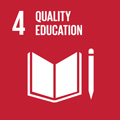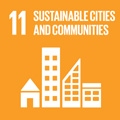- Docente: Anna Rosellini
- Credits: 6
- SSD: L-ART/04
- Language: French
- Teaching Mode: In-person learning (entirely or partially)
- Campus: Bologna
- Corso: Second cycle degree programme (LM) in Visual Arts (cod. 6819)
-
from Nov 14, 2025 to Dec 19, 2025
Learning outcomes
Students learn about the theories at the core of the most relevant design processes of architectural exhibitions and exhibition buildings. They acquire the necessary knowledge to interpret the role of exhibitions in the redefinition, narration and enhancement of architecture and its theoretical, cultural, social, and political foundations. Through the study of curatorial practices and significant exhibition buildings, they develop a personal capacity to do research on displaying architecture and the methodology to detect, historically locate and critically evaluate the major issues related to the relationship between artworks and architectural spaces.
Course contents
The course begins with a masterclass presentation (1/3 of the course) and continues in a workshop format (2/3 of the course). The presentation aims to explore questions relevant to the design of exhibitions on themes related to architecture.
Workshop
ART OF LIVING Teacher Anna Rosellini / tutor Natalie Donat-Cattin
During the workshop, students work on a collective research topic and on the methods and tools for presenting and representing subjects related to architecture, the city, and the territory. Through the study of significant themes, they develop personal research skills and the methodology for designing an exhibition.
For more information, see: WORKSHOP PROGRAM
Organisation of sessions
Sessions 1 and 2
Lectures
Sessions 3 and 4
Workshop: EXPLORATION AND STRUCTURING / PROJECT HYPOTHESES
Sessions 5 and 6
Workshop: PROJECT DEVELOPMENT
Sessions 7
Workshop: PRESENTATIONS OF PRELIMINARY PROJECTS
Regular attendance is recommended.
The final presentation of the projects will take place on 22 January 2026 (from approximately 10:00 a.m. to 6:00 p.m.) and will feature Sandra Costa, Amerigo Mariotti, Beatrice Sartori and Giorgia Tronconi. It will be organised in collaboration with the exhibition space dedicated to emerging art and contemporary research ADIACENZE.
Readings/Bibliography
Attending students
On architectural exhibitions (recommended essays)
Anna Rosellini, Stefano Setti, Pensiero radicale esibito. Happening, Scenografie, Installazioni, Milano, Skira, 2025.
Eeva-Liisa Pelkonen, Exhibit A: Exhibitions that Transformed Architecture, 1948-2000, London, Phaidon Press, 2018.
Roberto Gigliotti, Displayed Spaces. New Means of Architecture (Re)Presentation through Exhibitions, Leipzig Spector, 2015.
Thordis Arrhenius, Mari Lending, Wallis Miller, Jérémie Michael McGowan (eds.), Place and Displacement Exhibiting Architecture, Zürich, Lars Müller Publishers, 2014.
Workshop
Nephthys Zwer, Philippe Rekacewicz, Cartographie radicale. Explorations, Paris, Dominique Carré, 2021.
The bibliography will be completed during the workshop, depending on the topic discussed.
Non-attending students
Eeva-Liisa Pelkonen, Exhibit A: Exhibitions that Transformed Architecture, 1948-2000, London, Phaidon Press, 2018.
Roberto Gigliotti, Displayed Spaces. New Means of Architecture (Re)Presentation through Exhibitions, Leipzig Spector, 2015.
A book of your choice from:
Anna Rosellini, Stefano Setti, Pensiero radicale esibito. Happening, Scenografie, Installazioni, Milano, Skira, 2025.
Thordis Arrhenius, Mari Lending, Wallis Miller, Jérémie Michael McGowan (eds.), Place and Displacement Exhibiting Architecture, Zürich, Lars Muller, 2014.
Teaching methods
Lectures, workshop
Assessment methods
Attending students
The examination consists of developing and presenting an exhibition project.
For further information, see: WORKSHOP PROGRAM
Project reviews are scheduled during the course. Participation in these reviews is mandatory. Reviews are not graded and should be considered opportunities for discussion and sharing aimed at improving the project. At the end of the course, there will be an initial presentation of preliminary projects (this presentation allows for initial feedback on the project developed; its evaluation is not considered in the final grade but indicates the progress of the project, its strengths and areas for improvement). The final presentation is organised approximately one month after the end of the course and involves the participation of a committee of lecturers and experts in the field (this presentation is subject to evaluation).
Assessment criteria:
1. The achievement of an organic vision of the subject addressed in the project, mastery of expression and specific language, originality of analysis and reflection, and familiarity with the methods and tools for presenting, representing and communicating the exhibition project will be assessed with marks of excellence.
2. A primarily mechanical or mnemonic knowledge of the subject addressed in the project, an unarticulated ability to synthesise and analyse, or correct but not always appropriate language, as well as an academic mastery of the methods and tools for presenting, representing and communicating the exhibition project will lead to modest assessments.
3. Educational shortcomings or inappropriate language, as well as poor knowledge of methods, analysis tools, and presentation, representation, and communication of the exhibition project will result in grades at the threshold of sufficiency.
4. Educational shortcomings, inappropriate language, lack of focus in analysis, methods, and tools for presentation, representation, and communication of the project can only be evaluated negatively.
5. The graphic quality of the project and active participation in the workshop will be evaluated.
Non-attending students
Oral exam on the content of the bibliography.
To pass the oral exam, students must demonstrate that they have acquired a critical understanding of the bibliography.
Assessment criteria:
1. An organic understanding of the topics covered in the bibliography, mastery of expressive language and specific terminology, originality of thought, and familiarity with methods and tools for analysing architectural exhibitions will be assessed with marks of excellence.
2. A primarily mechanical or mnemonic knowledge of the subject, an unarticulated ability to synthesise and analyse, or correct but not always appropriate language, as well as an academic mastery of the history of architecture exhibitions will lead to modest evaluations.
3. Educational gaps or inappropriate language, as well as poor knowledge of methods and tools for analysing architectural exhibitions, will result in marks at the threshold of sufficiency.
4. Educational gaps, inappropriate language, lack of guidance in the bibliography, and inability to analyse architectural exhibitions can only be assessed negatively.
Students with learning disorders and\or temporary or permanent disabilities: please, contact the office responsible (https://site.unibo.it/studenti-con-disabilita-e-dsa/en/for-students) as soon as possible so that they can propose acceptable adjustments. The request for adaptation must be submitted in advance (15 days before the exam date) to the lecturer, who will assess the appropriateness of the adjustments, taking into account the teaching objectives.
Teaching tools
The course images, part of the bibliography and the various detailed programmes are provided to the students.
Office hours
See the website of Anna Rosellini
SDGs




This teaching activity contributes to the achievement of the Sustainable Development Goals of the UN 2030 Agenda.
